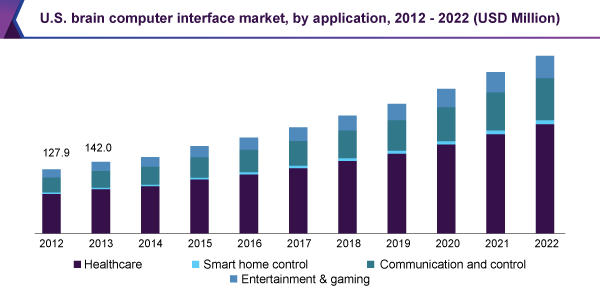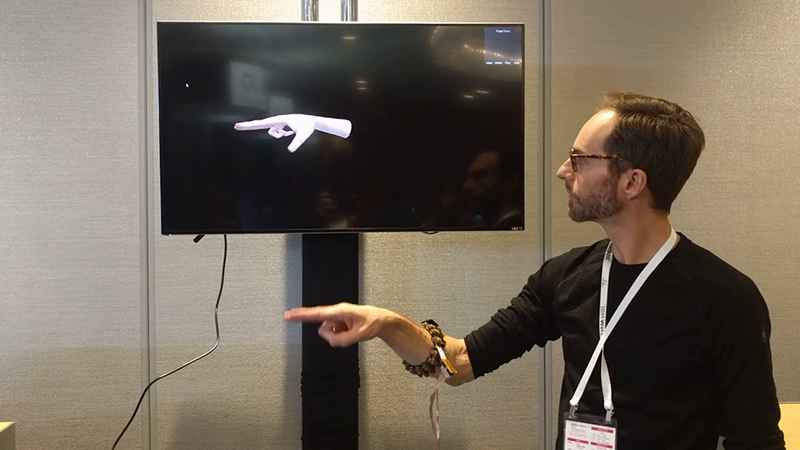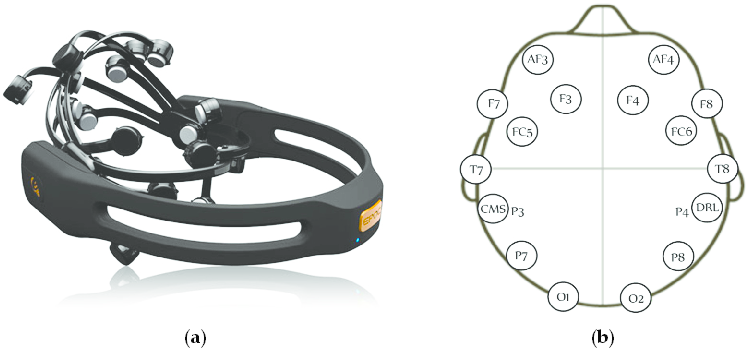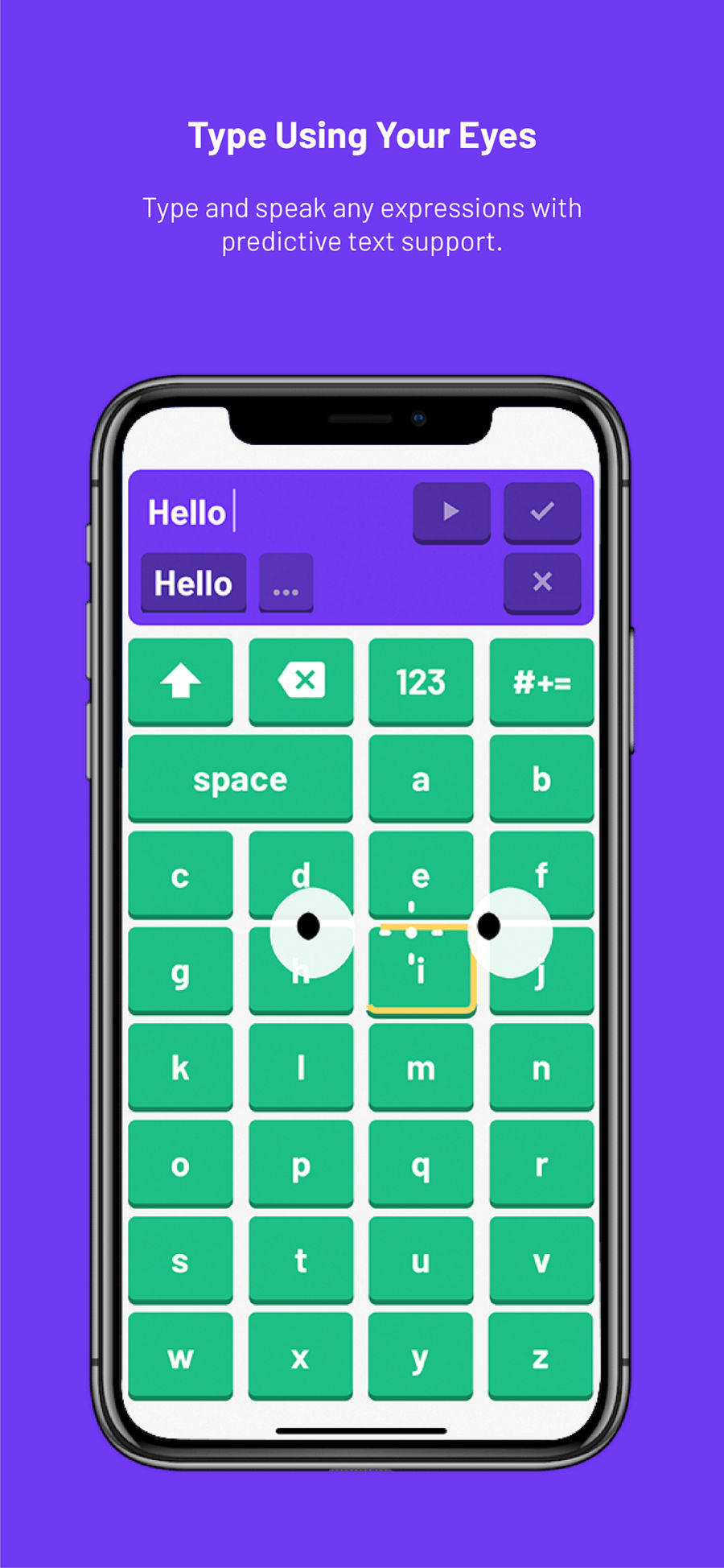27
Brain-computer interface(BCI) technology is an emerging technology that combines human thinking and machines. Through the integration of the human brains and the machines, it can break the current interaction mode between humans and machines, and humans and the environment, enabling humans to break through the limitations of the body and tools, especially helping those with cognitive and behavior problems restore their health conditions and fit into society.
Brain-Computer Interfaces
Therefore, BCI technology has attracted a lot of attention and investment from researchers, technology enterprises, venture capitalists, and defense agencies, with its market expectation gradually growing up. It is predicted that in 2020, the market size of global BCI technology is expected to reach 1.46 billion US dollars.

Due to the complexity of brain research, many related technologies are still in the research or small-scale experimental stage, and there are very few technologies that can be truly commercialized on a large scale.
However. some pioneers are planning a blueprint for us: artificial intelligence is playing a very important role in the BCI technology, which also means the integration of artificial intelligence and BCI technology is an important way for the field to become mature.
From Neuralink to Facebook: Giants are Taking Actions
Early in 2017, the CEO of Tesla Elon Musk founded Neuralink, a BCI technology company, to connect human brains and machines through machine learning technology to enhance the computing power of human to help those suffering from severe brain damage. To achieve this goal, the company has raised funds of 158 million dollars, and most of them come from Musk himself.
In July of this year, Neuralink announced that it had successfully tested the technology in the brain of a monkey. Musk said that human experiments will be conducted next year to treat human brain damages and spinal cord injuries.
Neuralink - Merging Brain and Machine
In September, Facebook acquired CTRL-Labs, a US brain-control technology startup. Although the amount of the acquisition was not disclosed, the foreign media estimated that it may be between 500 million and 1 billion dollars.
Founded in 2015, CTRL-Labs received 28 million dollars in financing from organization such as Google Ventures (GV) and Amazon Alexa Fund in February. Before acquired by Facebook, the company received a total of $67 million in financing.
It is reported that Facebook will develop a wristband product that can receive brain signals based on CTRL-Labs technology, providing a new type of human-computer interaction for future social activities.

Wristband Product of CTRL-Labs
DARPA: An important participant
In this area, there is also an important institution that must be mentioned-- the US Department of Defense Advanced Research Projects Agency (DARPA).
DARPA has been researching and funding BCI for 20 years. Recently, it has been promoting the integration of machine learning, AI technologies and BCI technology. It also propels the applications of BCI technology in military areas, such as allowing soldiers to control unmanned aerial vehicle(UAV) through the brain, or to perform complex multitasking with a computer system, etc..
Controlling UAV With Your Mind
DARPA has funded many technology companies in this field in a variety of ways and channels, such as Battelle, a brain control technology company, which uses machine learning to help patients regain conscious control of their fingers, hands and wrists. The company received funds of $1 million through an "AI Next" program of $2 billion from DARPA.
In addition to the above-mentioned technology giants and government research institutions, there are also some startups that are using artificial intelligence to promote the development of BCI technology:
Emotiv: to Tap the Potential of Human Brains
Founded in 2011, EmoTIv, a California company, is committed to using electroencephalograph (EEG) technology to understand research on human brains and the development of related software and hardware products, and to convert brainwave signals into digital commands through machine learning algorithms.
What is EEG Technology?
The company has launched head-mounted devices EPOC + and EPOC Flex for researchers, consumer-facing head-mounted device Insight, and an enterprise-grade Bluetooth headset MN8 that can analyze the stress and attention of employees.
At the same time, the company has developed a variety of software products to help users better understand brain activities, and even control UAVs, robots, cars, games and so on.
EMOTIV is a typical platform-based startup that has received several international awards for its software and hardware products, including the Red Dot Award, the AutoVision Innovation Award, and the Australian International Design Awards, the Australian Engineering Excellence Award and the Edison Award. Its product portfolio can be used in design, art, psychology, medicine, automotive, transportation, defense and security.

(a) Emotiv Epoc headset; (b) Emotiv Epoc electrode arrangement
BrainQ: to Improve the Lives of Patients with Neurological Trauma
BrainQ is an Israeli neurotechnology startup founded in 2011. Its mission is to improve the lives of patients with neurological trauma and enable them to stand up again.
The company mainly uses non-surgical implantation to help patients with stroke and spinal cord injury. The brain activity of the patient is recorded and analyzed through its self-developed AI algorithm, and high-resolution images are generated to perform personalized electromagnetic therapy for the patient.
The company has applied its AI neural interference therapy to animal research and has conducted clinical trials for stroke patients.

NextMind:For Human-computer Interaction of Next Generation
Founded in 2017, French startup NextMind is committed to developing the brain-computer interfaces of the next generation. The company is trying to develop brain sensing technology that can be used in AR/VR head-mounted devices to provide consumers with a new way of human-computer interaction.
Through machine learning algorithms, brain analysis technology of NextMind can convert signals on the visual cortex into digital commands in real time. Thus users can control some electronic devices or play games directly through their minds without external handheld devices such as keyboards and mice.
NextMind Unveils World's First Brain-Sensing Wearable Device Control
Congixion: to Break through Communication Barriers with Brain Waves
Congixion is a California startup founded in 2014, which has developed an AI-based BCI interface that converts brain waves into words to help people with language dysfunction communicate properly, enabling them to better integrate into society and improve their quality of lives.
The wireless BCI technology developed by the company can read and optimize the user's brain signal, and identify and even predict what the user wants to express through AI technology, making the user's communication more intelligent and efficient.
The company has launched a mobile app called Speakprose that uses eye tracking technology, allowing users with mobility difficulties to use their eyes to select words on mobile devices to communicate with others.

Logo of Speakprose

Speakprose
You May Also Like:
The 6th World Internet Conference is Coming Soon with New Highlights
The Number of 5G Subscribers of the Three Major Operators in China Exceeds 10 million
Infineon Intends to Acquire STMicro, with Third-quarter Gross Margin Increased to 38.2%.
The Sino-US comparison in Information Technology
Ordering & Quality
| Photo | Mfr. Part # | Company | Description | Package | Qty |
|
MC9S08GT16ACFBE | Company:NXP / Freescale | Remark:IC MCU 8BIT 16KB FLASH 44QFP | Package:QFP |
MC9S08GT16ACFBE Datasheet |
In Stock:746 Inquiry |
Inquiry |
|
MC68376BACAB25 | Company:NXP / Freescale | Remark:IC MCU 32BIT 160QFP | Package:QFP |
MC68376BACAB25 Datasheet |
In Stock:78 Inquiry |
Inquiry |
|
MPY100CM | Company:TI | Remark:low cost precision device designed for general purpose application | Package:TO100 |
MPY100CM Datasheet |
In Stock:71 Inquiry |
Inquiry |
|
MC68908GZ8MFAE | Company:NXP | Remark:IC MCU 8BIT 8KB FLASH 48LQFP | Package:48-LQFP |
MC68908GZ8MFAE Datasheet |
In Stock:106 Inquiry |
Inquiry |
|
BCM7501KFB P20 | Company:BROADCOM | Remark:IC Chips | Package:BGA64 |
BCM7501KFB P20 Datasheet |
In Stock:19250 Inquiry |
Inquiry |
|
MC34905CS5EK | Company:NXP / Freescale | Remark:IC SBC HIGH SPEED CAN 5V 32SOIC | Package:32-BSSOP (0.295", 7.50mm Width) Exposed Pad |
MC34905CS5EK Datasheet |
In Stock:88 Inquiry |
Inquiry |
|
DS1818-10 | Company:Maxim Integrated | Remark:IC 2.88V W/PB 10% TO92-3 | Package:TO-226-3, TO-92-3 (TO-226AA) |
DS1818-10 Datasheet |
In Stock:1150 Inquiry |
Inquiry |
|
MCF51JE256CLK | Company:NXP | Remark:IC MCU 32BIT 256KB FLASH 80LQFP | Package:80-LQFP |
MCF51JE256CLK Datasheet |
In Stock:2091 Inquiry |
Inquiry |
|
MPC8280VVQLDA | Company:NXP / Freescale | Remark:IC MPU MPC82XX 333MHZ 408TBGA | Package:480-LBGA |
MPC8280VVQLDA Datasheet |
In Stock:744 Inquiry |
Inquiry |
|
MC68EN360AI25L | Company:NXP | Remark:IC MPU M683XX 25MHZ 240FQFP | Package:240-BFQFP |
MC68EN360AI25L Datasheet |
In Stock:3244 Inquiry |
Inquiry |